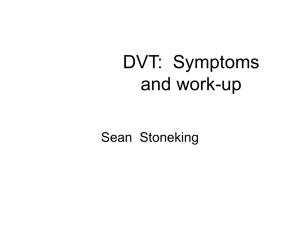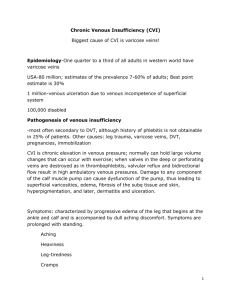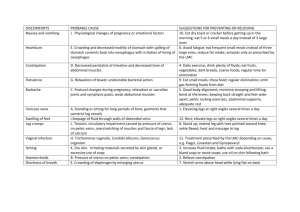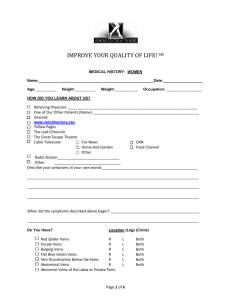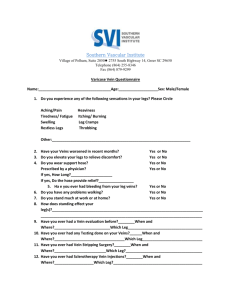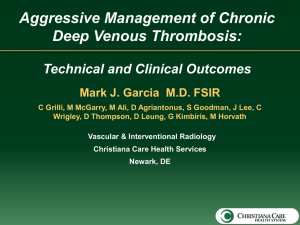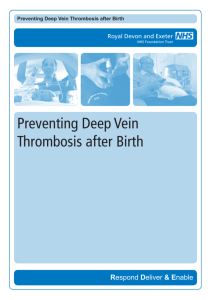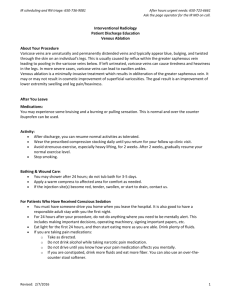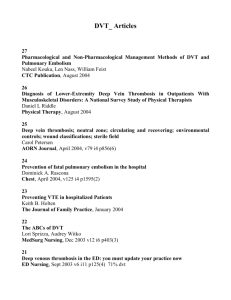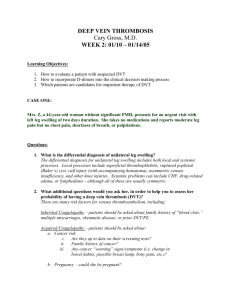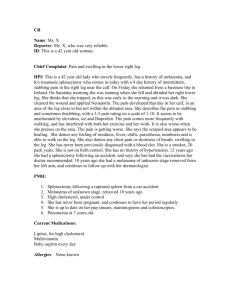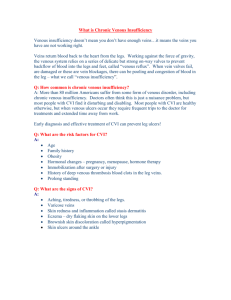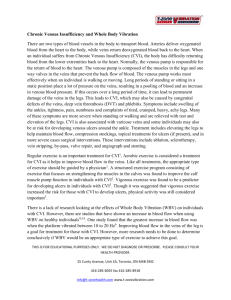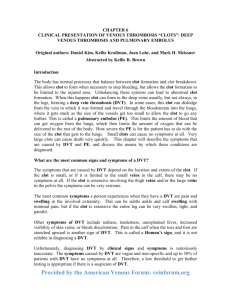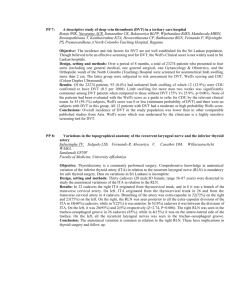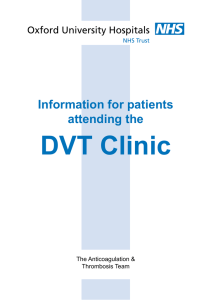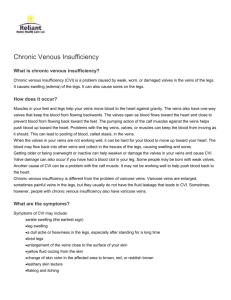Read more about chronic - Great Lakes Surgical Associates
advertisement
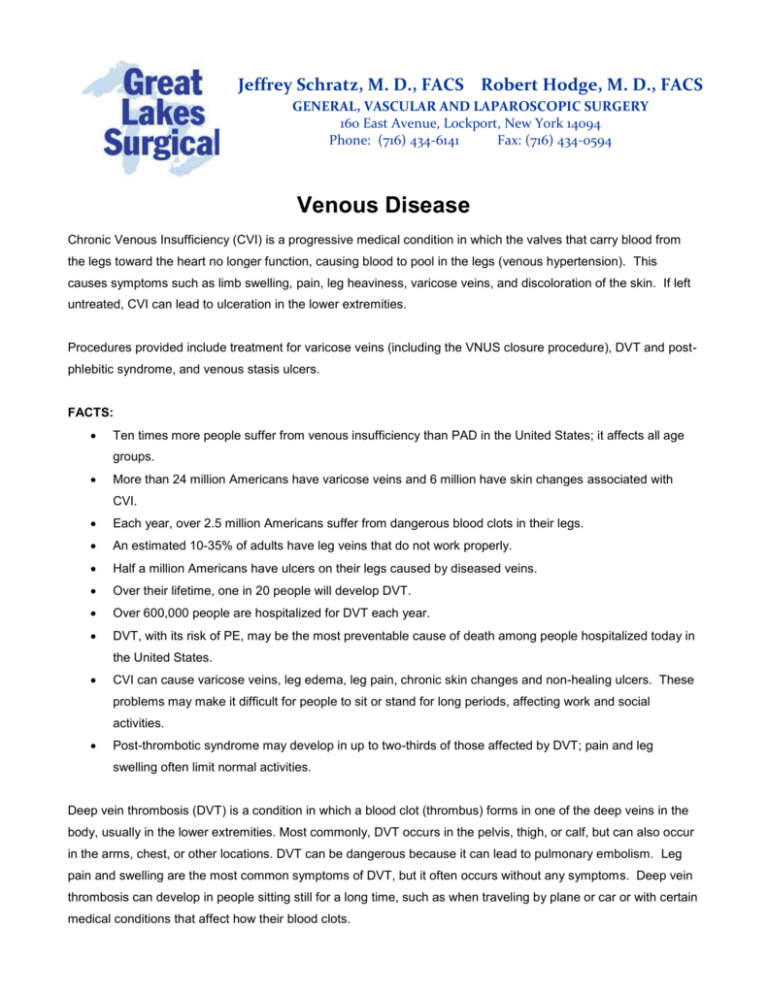
Jeffrey Schratz, M. D., FACS Robert Hodge, M. D., FACS GENERAL, VASCULAR AND LAPAROSCOPIC SURGERY 160 East Avenue, Lockport, New York 14094 Phone: (716) 434-6141 Fax: (716) 434-0594 Venous Disease Chronic Venous Insufficiency (CVI) is a progressive medical condition in which the valves that carry blood from the legs toward the heart no longer function, causing blood to pool in the legs (venous hypertension). This causes symptoms such as limb swelling, pain, leg heaviness, varicose veins, and discoloration of the skin. If left untreated, CVI can lead to ulceration in the lower extremities. Procedures provided include treatment for varicose veins (including the VNUS closure procedure), DVT and postphlebitic syndrome, and venous stasis ulcers. FACTS: Ten times more people suffer from venous insufficiency than PAD in the United States; it affects all age groups. More than 24 million Americans have varicose veins and 6 million have skin changes associated with CVI. Each year, over 2.5 million Americans suffer from dangerous blood clots in their legs. An estimated 10-35% of adults have leg veins that do not work properly. Half a million Americans have ulcers on their legs caused by diseased veins. Over their lifetime, one in 20 people will develop DVT. Over 600,000 people are hospitalized for DVT each year. DVT, with its risk of PE, may be the most preventable cause of death among people hospitalized today in the United States. CVI can cause varicose veins, leg edema, leg pain, chronic skin changes and non-healing ulcers. These problems may make it difficult for people to sit or stand for long periods, affecting work and social activities. Post-thrombotic syndrome may develop in up to two-thirds of those affected by DVT; pain and leg swelling often limit normal activities. Deep vein thrombosis (DVT) is a condition in which a blood clot (thrombus) forms in one of the deep veins in the body, usually in the lower extremities. Most commonly, DVT occurs in the pelvis, thigh, or calf, but can also occur in the arms, chest, or other locations. DVT can be dangerous because it can lead to pulmonary embolism. Leg pain and swelling are the most common symptoms of DVT, but it often occurs without any symptoms. Deep vein thrombosis can develop in people sitting still for a long time, such as when traveling by plane or car or with certain medical conditions that affect how their blood clots.

